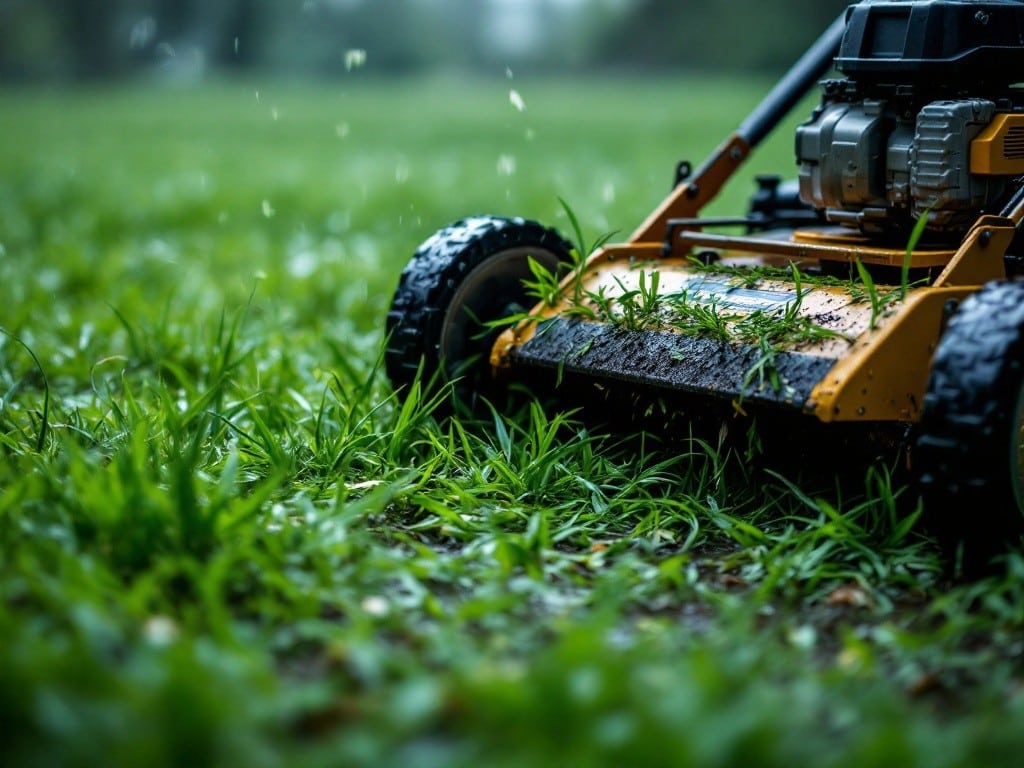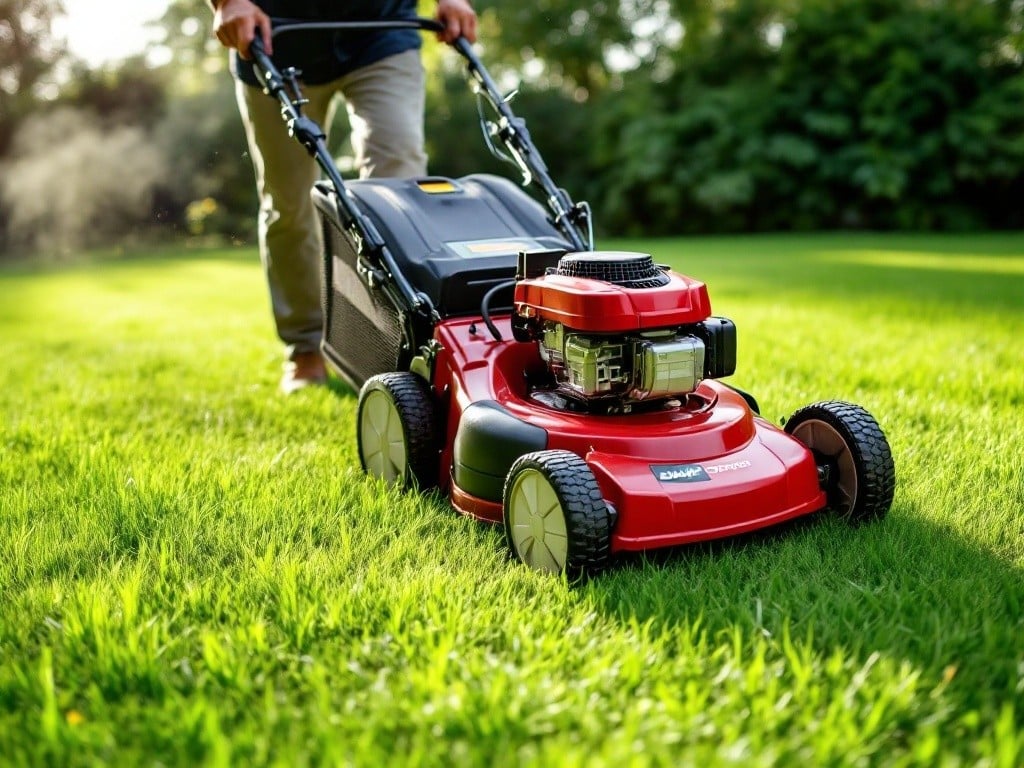Lawn mowing is a cornerstone of yard maintenance, and understanding how often you should mow your lawn is critical to keeping it healthy and looking its best. A well-mowed lawn not only enhances your property’s curb appeal but also contributes to the overall health and vitality of your yard. Mowing too frequently or infrequently can lead to issues such as stress on the grass, uneven growth, or vulnerability to pests and diseases. This comprehensive guide will help you determine the ideal mowing frequency based on your lawn’s specific needs and ensure your yard thrives year-round.
Why Mowing Frequency Matters
Mowing frequency has a significant impact on the health and appearance of your lawn. Properly timed mowing sessions encourage even growth, prevent stress on the grass, and improve resistance to weeds and diseases.
When mowing is done at the right intervals, it helps the grass maintain a strong root system, which is essential for water and nutrient absorption. On the other hand, irregular mowing can lead to patchy areas, increased weed growth, and an overall unkempt appearance.
Key Benefits of Proper Mowing
- Healthier Growth: Regular mowing promotes dense, strong grass growth by trimming the blades and encouraging root expansion.
- Weed Control: Consistent mowing reduces the opportunity for weeds to spread by preventing them from flowering and seeding.
- Improved Aesthetics: A well-maintained lawn with even grass height is visually appealing and enhances the value of your property.
- Enhanced Resilience: Routine mowing helps your lawn recover faster from environmental stressors, such as drought, heat, or heavy foot traffic.
Factors to Consider When Determining Mowing Frequency
Grass Type
Cool-season grasses, such as Kentucky bluegrass and fescues, grow most rapidly in spring and fall, requiring more frequent mowing during these periods.
Warm-season grasses, including Bermuda and zoysia, thrive in summer and need regular mowing when temperatures are high. Understanding your grass type allows you to adjust your schedule to its specific growth patterns.
Seasonal Growth Rates
Grass grows at different rates throughout the year. In spring, most grass types grow quickly due to favorable conditions, necessitating frequent mowing. Summer brings slower growth for cool-season grasses but peak activity for warm-season varieties.
In fall, cool-season grasses experience another growth spurt, while warm-season grasses start to slow down. During winter, growth halts for most grasses, reducing or eliminating the need for mowing.
Weather and Soil Conditions
Rainfall and temperature play a critical role in grass growth. Wet weather accelerates growth, often requiring more frequent mowing to maintain the desired height. Conversely, drought or high heat can slow growth, allowing you to extend the time between mowing sessions.
It’s also helpful to consider how many decibels is a lawn mower when planning your mowing schedule, especially in areas where noise may be a concern. This awareness can help you choose quieter equipment or decide when to mow to minimize disturbance.
Desired Lawn Height
Your preferred lawn height directly impacts mowing frequency. Taller grass provides shade for the soil, helping retain moisture and suppress weeds, and may require less frequent mowing. Shorter grass, while visually appealing, demands more frequent cuts to maintain uniformity and prevent overgrowth. Striking the right balance is essential for a healthy and attractive lawn.
Basic Mowing Guidelines
The One-Third Rule
Never cut more than one-third of the grass blade in one session. This prevents stress and promotes healthier regrowth. Removing too much at once can leave the grass vulnerable to sunburn, water loss, and disease. By adhering to this rule, you allow the grass to recover quickly and maintain its natural growth patterns. For example, if your lawn is 3 inches tall, only cut it down to 2 inches during a single mowing session. Following this guideline ensures consistent growth and a greener, healthier lawn.
Frequency Suggestions
- Cool-Season Grass: Every 4-7 days in spring and fall.
- Warm-Season Grass: Every 5-7 days in summer.
- Adjust for weather and growth patterns.
Seasonal Tips for Mowing

Spring
Spring marks the start of the growing season, with grass growing rapidly due to optimal temperatures and increased sunlight. Begin mowing as soon as the grass starts growing, typically in early spring. Mow frequently during this period to keep up with growth, and ensure your mower blades are sharp to make clean cuts that encourage healthy regrowth.
Summer
During summer, warm-season grasses are at their peak, while cool-season grasses slow down due to heat stress. Raise your mower blade height to help grass retain moisture and shade the soil.
Mow during the early morning or late evening to avoid heat stress on both the grass and yourself. Proper hydration through deep, infrequent watering can support your lawn during dry spells.
Fall
Fall is another active growing season for cool-season grasses, requiring frequent mowing to manage the growth. Gradually lower the mowing height to prepare the lawn for winter while avoiding scalping.
Remove fallen leaves regularly to prevent them from smothering the grass and creating bare patches. This seasonal care sets the stage for a healthy lawn come spring.
Winter
Winter usually brings dormancy for most grass types, reducing or eliminating the need for mowing. Use this time to perform maintenance on your mower, such as sharpening blades and cleaning the equipment. For areas with mild winters where grass continues to grow slowly, mow sparingly to keep the lawn tidy without overcutting.
Common Mowing Mistakes to Avoid
Cutting Too Short
Cutting grass too short, also known as scalping, weakens the lawn and exposes the soil to sunlight. This encourages weed growth and makes it harder for grass to recover. Short grass also loses its ability to retain moisture, leading to browning and thinning patches.
To avoid these problems, set your mower blades at an appropriate height and stick to the one-third rule. Taller grass shades the soil, reducing evaporation and promoting deeper root systems.
Mowing Wet Grass
Mowing wet grass can result in clumping, which creates an uneven appearance and can clog your mower. Wet grass is also more prone to being torn instead of cleanly cut, which damages the blades and makes the lawn more susceptible to diseases.
Always wait until the grass is dry before mowing. If morning dew or recent rain leaves the grass damp, consider delaying your mowing session to ensure optimal results.
Skipping Mowing
Skipping mowing sessions allows grass to grow too tall, making it more challenging to cut when you finally mow. Overgrown grass often requires multiple passes to achieve the desired height, which can stress the lawn and leave uneven patches. Consistency is key—stick to a regular mowing schedule based on your lawn’s growth rate. Keeping up with mowing also prevents the accumulation of thatch, which can hinder water and nutrient absorption.
Neglecting Equipment Maintenance
Dull mower blades tear grass instead of cutting it cleanly, resulting in frayed tips that turn brown. This not only affects the appearance of your lawn but also makes the grass more vulnerable to diseases and pests. Regularly sharpen your mower blades and check for damage or wear. Proper maintenance of your equipment ensures efficient mowing and promotes the overall health of your lawn. Additionally, clean the underside of your mower after each use to prevent grass buildup and maintain optimal performance.
Conclusion
Determining how often to mow your lawn depends on factors like grass type, weather, and seasonal growth patterns. By understanding these basics and following best practices, you can keep your lawn healthy, attractive, and resilient.
Regular mowing not only improves the appearance of your yard but also strengthens your lawn’s overall health, making it more resistant to weeds, pests, and environmental challenges.
Stick to a consistent mowing schedule, use proper techniques, and invest time in equipment maintenance. Your lawn will reward you with lush, green beauty and become a space you can take pride in year-round.

